English
English
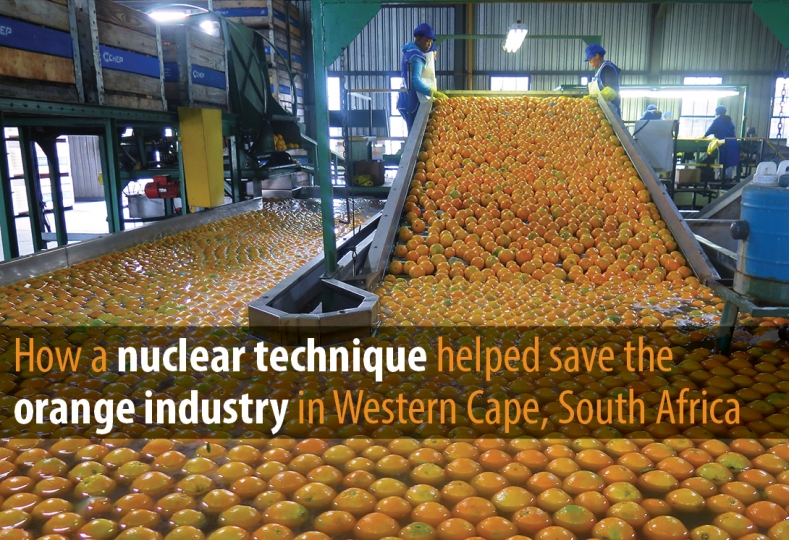

Citrus is the second most important agricultural export commodity in South Africa, with most of the production destined for exports. The industry employs 10% of the country’s agricultural labour force. Some parts of the country, including the Elephant’s River Valley, are a natural habitat for the false codling moth, whose larvae feed in the fruit, destroying the pulp and threatening the livelihoods of farmers and farm workers. Since the introduction of the sterile insect technique in 2008, the moth population has gradually diminished, because the sterilized insects produce no offspring. This photo essay explains how 40 million insects are reared, irradiated and released every week.

Egg pans. 4000 false codling moths are made to breed for five days under optimal conditions, and around 1 600 000 eggs are harvested from each pan. These eggs will then be reared into moths, sterilized and released in the wild.

Feed preparation. The moths’ diet is based on maize, wheat germs and milk powder. The red colorant turns the bodies of the insects red, enabling the identification of sterile moths in the wild. This is key to monitoring the effectiveness of the effectiveness of the pest control programme.

Maize bags. 2500 kilograms of maize are used for moth feed every day.

Inoculation: This machine prepares portions of the feed into plastic bags and workers add the wax paper with 1500 moth eggs each. Besides this new technology, the plant workers also raise larvae in jars.
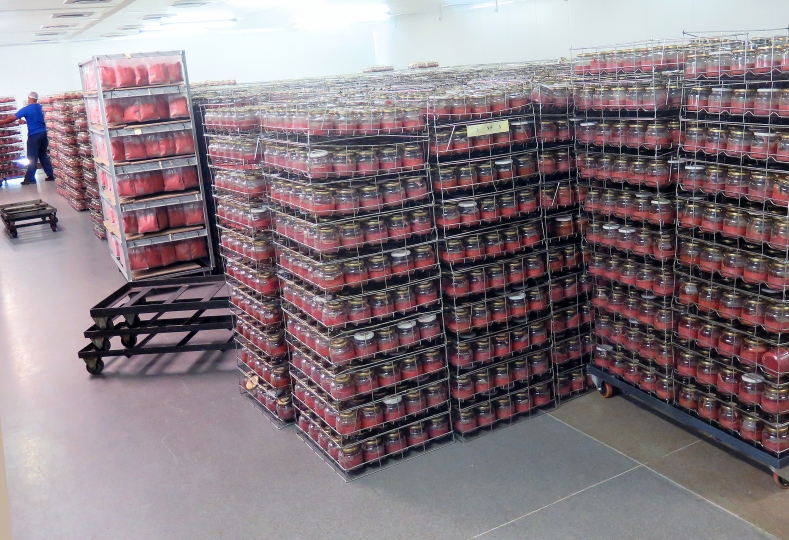
Feeding: The eggs are kept at room temperature for 12 days, during which they turn into larvae.
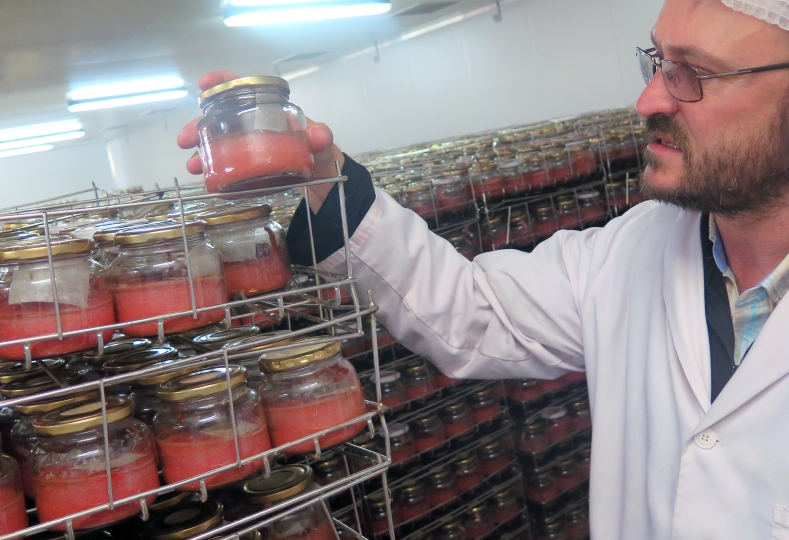
XSIT General Manager Sampie Groenewald examining the larvae in the glass jars filled with feed.

Larvae: After 12 days, the jars are opened and the larvae climb into a honeycomb. Larvae grown in plastic bags eat their way through the plastic and then climb into the honeycomb.
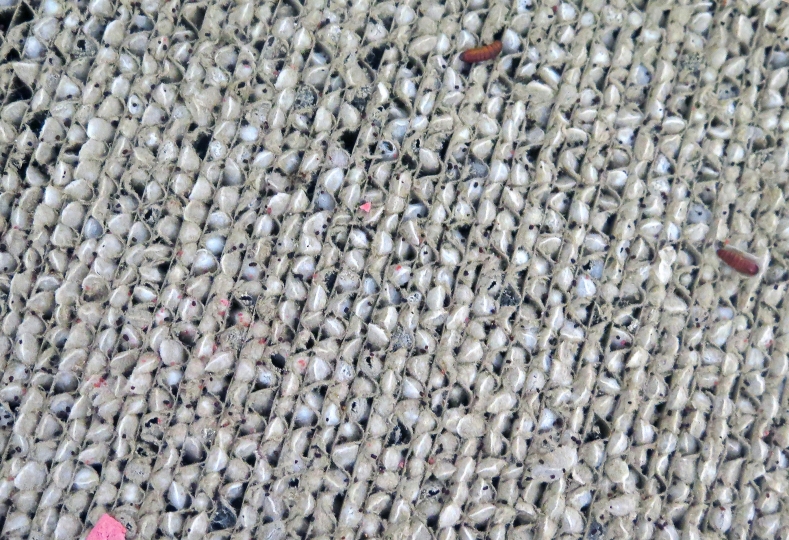
Pupae: The moths pupate in honeycombs like this one for seven days. Workers review and estimate the number of moths in each sheet in order to accurately forecast production volume every day.
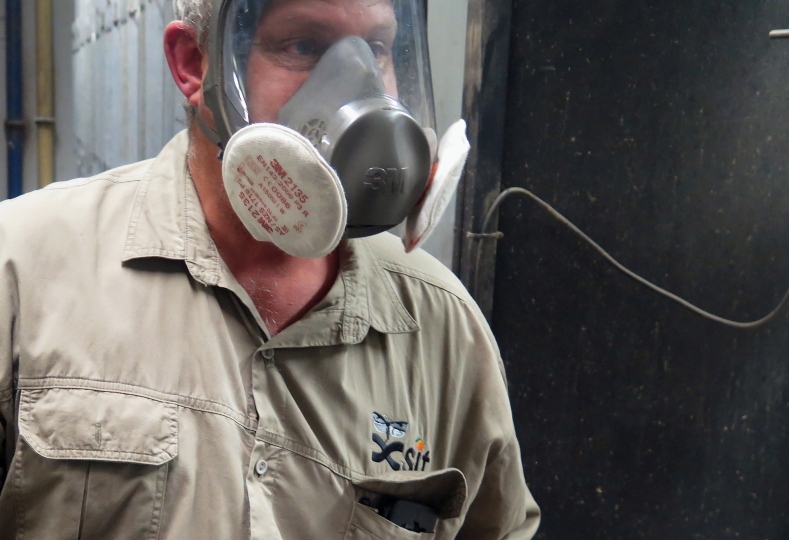
Wilhelm Koekemoer, production manager at XSIT, supervises the moth cabinets in which the adult insects emerge from the honeycombs after 11 days.

Moth collection. Following their emergence, moths are collected in pans like this and cooled to 10 degrees Celsius to keep them from flying around and mating. They will remain in this dormant stage until their release.

Irradiation: The moths, placed in boxes, are sterilized using gamma rays emitted by a cobalt-60 source. To ensure complete irradiation, the table rotates around the source, and the boxes also rotate. Irradiation currently lasts 37 minutes. Its duration is adjusted monthly in line with the gradually weakening strength of the radioactive source.

Transport: A million moths, about half of the production, are transported every day in this refrigerated van to the Sunday’s River and Gamtoos River Valleys in the Eastern Cape, where they are released over citrus orchards. The rest spend the night in cool rooms at the rearing facility, ahead of release the following morning.
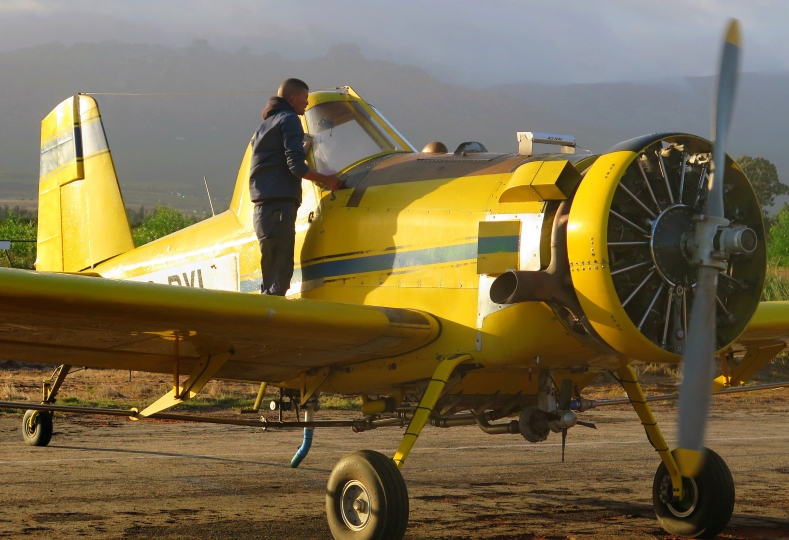
Getting ready to fly: XSIT’s aircraft in the morning twilight, preparing to take off with a million dormant moths on board.

Releasing the moths: Moths are released 100 meters above an orange orchard in the Elephant’s River Valley. 2000 moths are released per hectare, twice a week. After release into the warm temperature outside, the moths wake up and mate over the next five days. Thanks to the sterilization, this mating does not produce any offspring, so the orchards remain free of larvae.
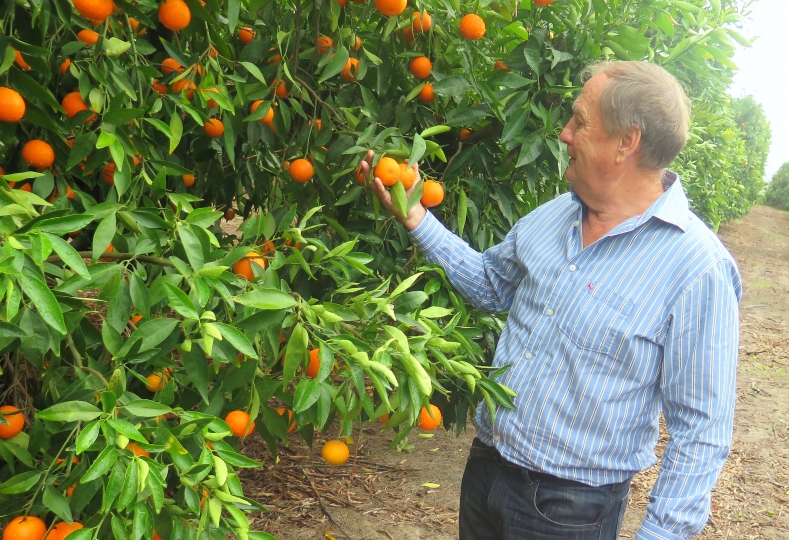
In the orchard: Farmer Gerrit van der Merwe is surveying his healthy, moth-free orange crop.
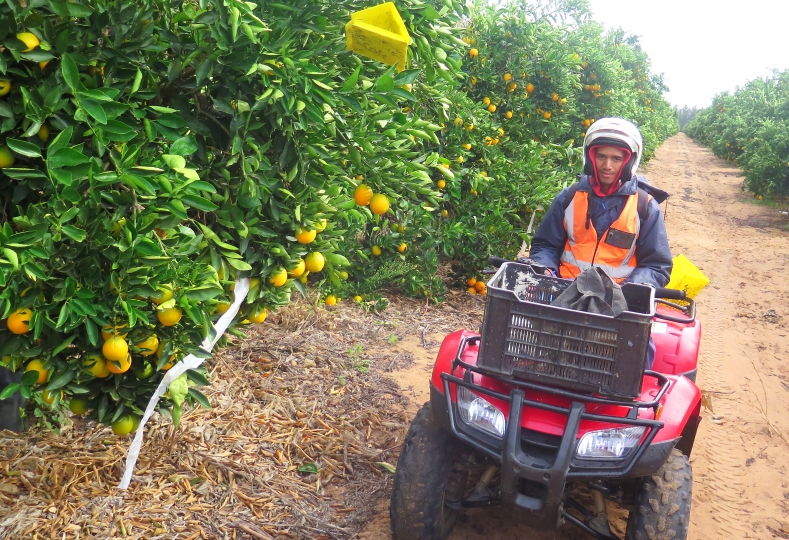
Quality control: XSIT employees regularly survey moths caught in these yellow traps. By counting the number of wild moths and sterile moths in the trap, they can determine the effectiveness of the control programme and the volume of moth release can be adjusted, if needed.

No wild moths: The bodies of all the moths caught are pink due to the presence of the red colorant in their diet. This indicates that there are no wild moths left in the orchard.

Packing house: Workers sorting and packing healthy oranges, destined for export markets in the United States, Europe, Asia and Africa.

Photos and text by Miklos Gaspar/IAEA. May 2016, Citrusdal, South Africa